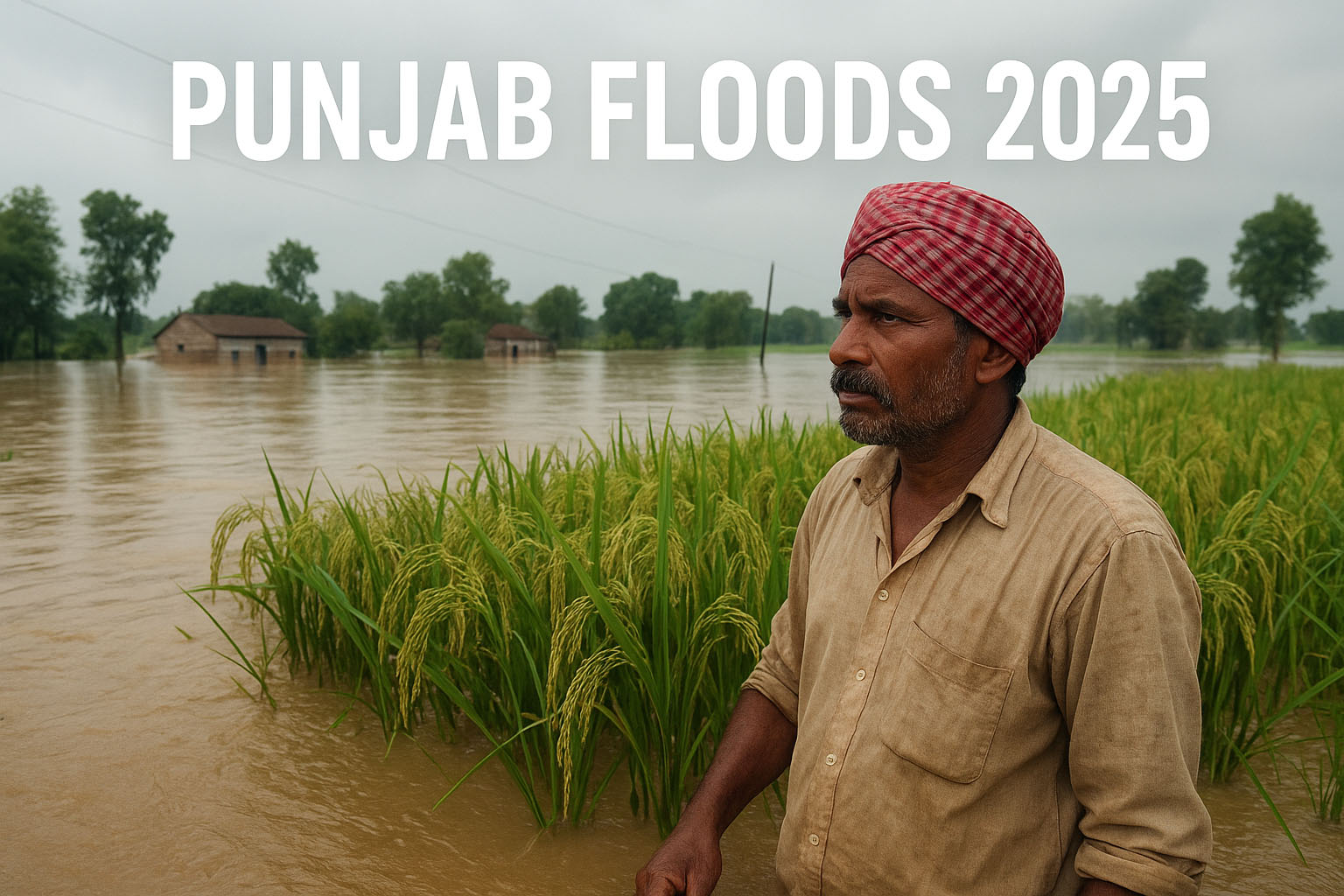Punjab Floods, Punjab is currently facing one of the worst flood situations in recent decades. Continuous heavy rainfall, overflowing rivers, and waterlogged cities have pushed the state into crisis. According to the India Meteorological Department (IMD), August 2025 has been the wettest August in northwest India since 2001, and Punjab has recorded excess rainfall of more than 1,000% on three separate occasions within a week.
This article provides a detailed overview of the situation, its impact on people, agriculture, and infrastructure, as well as the outlook for the coming weeks.
Unprecedented Rainfall in Punjab and Punjab Floods
The rainfall this season has been far above the long-term average. IMD reports that northwest India received 265 mm of rainfall in August, which is 34.4% higher than the seasonal norm. Punjab, in particular, has been battered with rainfall intensities rarely seen in recent history.
- Three instances of 1,000% excess rainfall in one week.
- Continuous downpours in both rural and urban areas.
- Rivers and rivulets swollen beyond safe levels.
This extreme weather has created a situation where both cities and villages are struggling to cope with waterlogging and floods.
Flooding Across Districts in Punjab Floods
The situation has worsened as major rivers and dams are overflowing:
- Ghaggar, Sutlej, Beas, and Ravi rivers have crossed danger marks.
- Bhakra and Pong dams are nearing their full capacity.
- More than 3 lakh acres of farmland have been submerged.
Worst-affected areas:
- Ferozepur, Fazilka, Patiala, Sangrur, and Ludhiana districts are among the hardest hit.
- In Ludhiana, breaches in Budha Nullah have caused water levels to rise up to 2–3 feet in several localities.
- Villages have been cut off, with residents relying on rescue boats for evacuation.
Humanitarian Crisis and Relief Efforts for Punjab Floods
The floods have displaced thousands of people across Punjab. Local communities, government agencies, and volunteers are actively working to provide relief.
Key relief measures:
- Boat rescues in submerged villages.
- Distribution of food rations, drinking water, mosquito nets, and medicines.
- Setting up of community kitchens and temporary shelters for displaced families.
- Voluntary organizations and citizens are also contributing by supplying essential goods and manpower.
This humanitarian response highlights the spirit of unity, but the scale of displacement means the need for aid is still growing.
Agricultural and Economic Losses
Punjab, known as the “Granary of India,” is heavily dependent on agriculture. The floods have caused severe damage to crops, especially paddy fields, which were nearing harvest.
Agricultural Impact:
- Paddy crops submerged in thousands of acres.
- Damage to maize, sugarcane, and vegetable crops.
- Concerns over soil fertility due to stagnant water.
Economic Impact in Punjab by Punjab Floods:
- Farmers face huge financial losses during a critical harvesting season.
- Disruption of road and transport networks is delaying supply chains.
- Repair costs for damaged infrastructure (roads, bridges, and houses) are expected to run into crores.
The combined effect will not only affect Punjab’s economy but also have implications for India’s food grain supply.
Weather Outlook for September 2025 and Punjab Floods
The IMD has forecast above-normal rainfall in September, predicting around 109% of the long-period average (LPA) for northwest India. This increases the risk of:
- Continued flooding in vulnerable districts.
- Overflowing rivers and dam water releases.
- More crop losses if fields remain waterlogged.
Authorities have been asked to strengthen embankments, improve drainage, and keep disaster response teams on high alert.
Long-Term Lessons for Punjab by Punjab Floods
This year’s floods highlight the urgent need for long-term planning and preparedness against extreme weather. Experts suggest:
- Improved flood management systems – better embankments, stormwater drainage, and early-warning systems.
- Climate-resilient farming practices – diversification beyond paddy, crop insurance, and flood-tolerant varieties.
- Infrastructure resilience – flood-proofing rural roads, houses, and storage facilities.
- Community preparedness – training and awareness programs for villages in flood-prone regions.
Punjab’s 2025 floods serve as a grim reminder of how climate change and extreme weather events can disrupt lives, agriculture, and economies. While the immediate focus remains on relief and rescue, the bigger challenge lies in rebuilding with resilience.
With predictions of heavy rainfall in September, the crisis is not yet over. Strengthening infrastructure, supporting farmers, and adopting long-term strategies will be crucial for the state to recover and prepare for the future.

